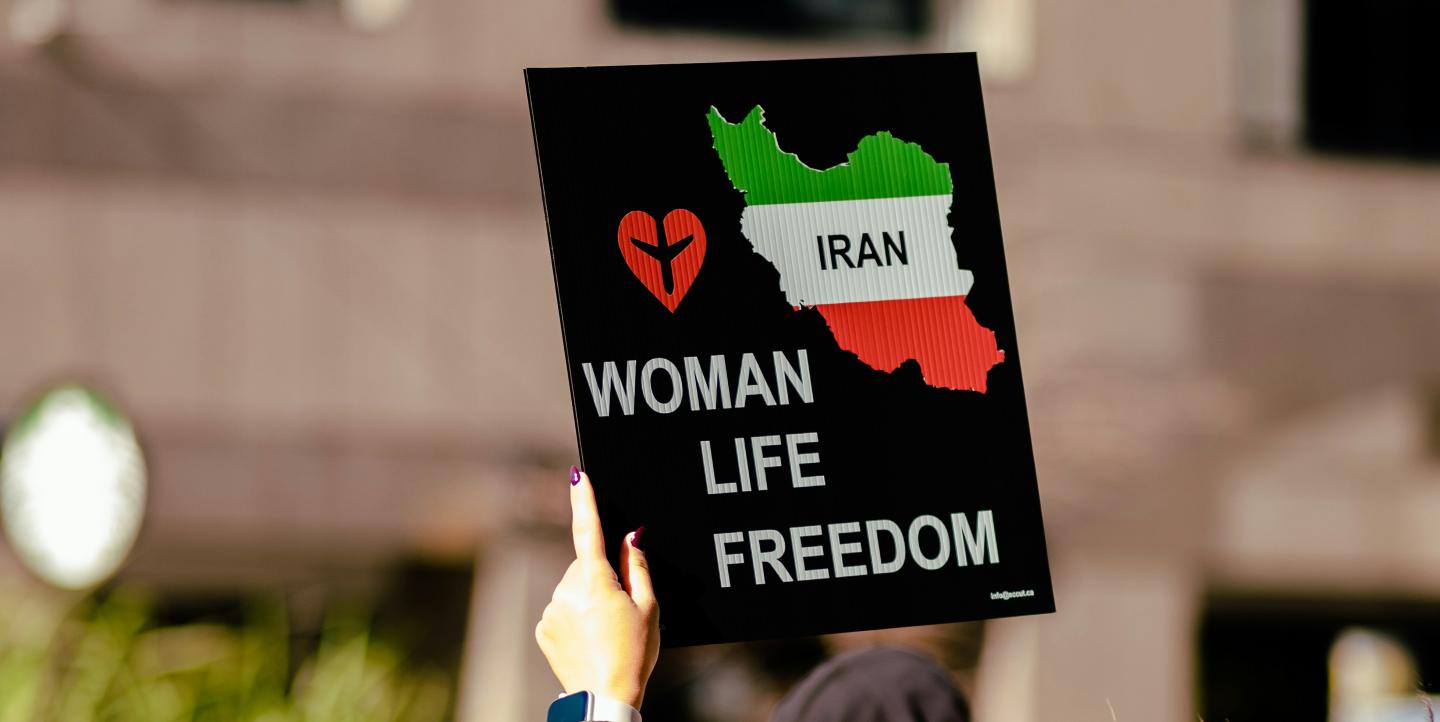Like almost every incident that occurs in Iran, a closed society, the May 19 helicopter crash that killed President Ebrahim Raisi was an enigma. The state media’s contradictory coverage of the crash made it all the more perplexing.
In the 16 hours following the disappearance of the helicopter carrying Raisi and several other Iranian officials including foreign minister Hossein Amirabdollahian, until Iran’s Red Crescent teams found its remains, many theories were published in Iran as “news.” Each one contradicted the previous.
The hodge-podge of ever-changing reports being fed to the public by state media was so confusing and chaotic that even some governmental outlets criticized it.
State media’s history of dishonesty
Many Iranians are accustomed to getting their news from overseas sources, particularly from Persian-language satellite TV channels based in the U.K. or the U.S.
Iran’s state-owned media, as well as non-governmental conservative outlets that are closely aligned with the country’s leadership, have been far from truthful in reporting on events such as anti-state protests. As far as their coverage of foreign affairs, they have, at best, heavily editorialized the actual news.
State media have also historically delayed publishing news about significant events. True to form, in the case of the president’s helicopter, they disclosed the news of its disappearance two hours after it happened. Given the track record of these sources, many Iranians refused to believe them after the helicopter crash.
In light of the contradictory reports around the helicopter crash, Iranians’ distrust comes as no surprise. The stark difference between foreign and domestic media’s reporting on the actual crash only added to the public’s skepticism. Whereas Iranian state outlets said the helicopter was forced into a “hard landing,” for instance, credible non-Iranian news wires described the incident as a “crash.”
In touch or out of touch?
Multiple state media outlets quoted government officials as saying they had been in contact with the helicopter passengers after the crash. A short while later, they reported that they had lost contact with them, while a few outlets said they had not been able to get in touch with anyone in the first place.
Yet a few other Iranian news websites quoted the president’s chief of staff as saying he had reached the pilot’s mobile phone, which was answered not by the pilot, but by Mohammad-Ali Al-e Hashem, Tabriz Friday prayer leader and one of the passengers.
The report added that Al-e Hashem, who passed away a few hours after the crash, had answered the pilot’s phone four times, and had appeared to be the only surviving passenger. The media floated yet another report: that the president and his delegation had safely deplaned and chosen ground transportation to get to the nearest major city, Tabriz.
As the chaotic news cycle continued, a few conservative publications, generally close to Iran’s hardline leader Ali Khamenei, wondered aloud if the incident had been the result of “a foreign plot” – a scenario they continue to ponder. Part of their thesis is that the president’s helicopter was the only aircraft out of three that had faced an incident: Iranian officials who were returning from a visit to a dam in Iran’s East Azerbaijan province had boarded three helicopters, two of which landed safely. The helicopter carrying the government's most prominent figures – and Khamenei allies – was the only one that had disappeared.
Cyber police warns citizens
As conflicting news continued to spread in the country, many Iranians – including journalists and citizen journalists – took to social media to post what they deduced about the incident, and to speculate. Iran’s cyber police promptly warned citizens that their social media activities were being monitored, and those who “spread rumors in this sensitive time would be dealt with.”
A senior Iranian journalist, who asked to remain unnamed for security purposes, told me that she and her colleagues were concerned after the warning was issued, so they curbed their social media activity.
“This is not our first rodeo. I was arrested last year and spent almost two months in jail on the pretext of a report I had written, which I posted about on social media. The cyber police were not issuing an empty threat; we know that they will persecute citizens. They are more sensitive toward journalists, of course.”
This journalist said that since her arrest and imprisonment, she and her colleagues worry more about their safety, particularly as one of them recently received a “warning” from the judiciary about his social media posts.
Conspiracy theories
The high-ranking officials were returning from the launch of the Qiz-Qalasi and Khoda-Afarin dams, a joint power project with Iran’s neighbor Azerbaijan, on the Aras river. Azerbaijani president Ilham Aliyev had also participated in the inauguration ceremony.
According to hardline media, a well-planned plot to kill the president was possible.
Despite the hardliners’ conspiracy theory, however, Iran’s military issued an early announcement, saying no signs of foul play had been detected, and there was no evidence that the aircraft had been shot at. The announcement came after the remains of the helicopter were found with no survivors.
Still, some hardline media in Iran continue to question the possibility of “foreign foul play.” The real reason for the crash might include issues aside from the rain and thick fog in the mountainous area where the helicopter went down, they say. The government is investigating; despite what they might conclude, will Iranians trust and believe what the state media reports about the findings?
Unknown data
In the absence of precise figures in Iran’s restricted society, an accurate estimate of the number of Iranians who rely on domestic media for news is difficult to come by. It is clear, however, that a large number, possibly the majority, of the Iranian public does not trust the country’s state media.
A few state news outlets acknowledged the public’s mistrust and confusion surrounding reporting on the crash. One quoted their source Bijan Nafisi, “a senior journalist and media expert,” as criticizing the current news chaos in the country. Nafisi told Iran’s Labor News Agency that an initiative for “media crisis management” is essential to curb discrepancies and inaccuracies in news coverage.
With all the controversies and contradictions, the public’s decision to gather information from foreign-based media seems rational. It will remain rational unless and until Iranian media adopt some level of truth-telling and transparency in reporting the country’s current events.
Photo by Tianlei Wu on Unsplash.


